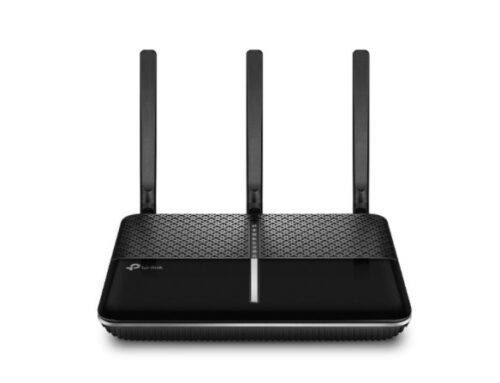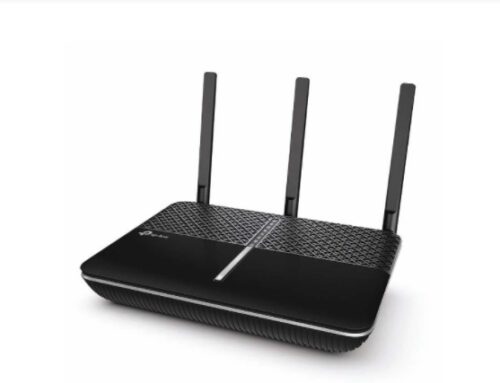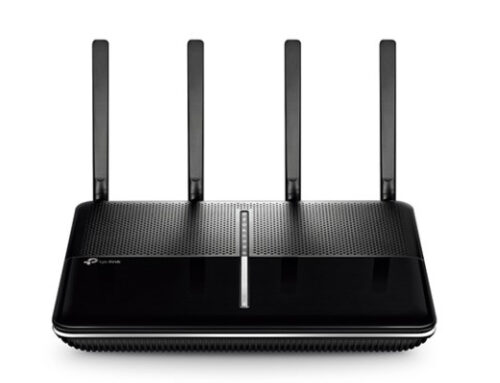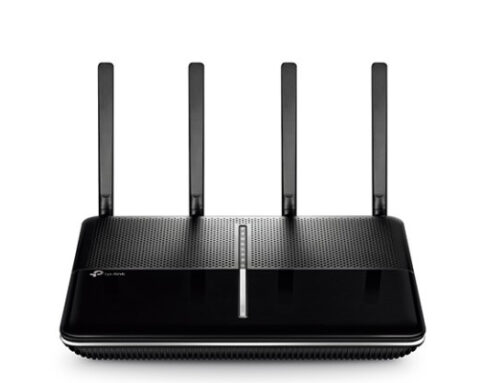TP-Link Archer VR400 is equipped with advanced VDSL2 technology, which helps it to provide amazing VDSL broadband rates of as high as 100 Mbps, which is roughly four times faster than ADSL2+. The Archer VR400 works as both a DSL modem and a wireless router, thereby merging the functions of two devices in one. Aside from supporting all regular DSL connections, the integrated DSL port also supports VDSL2, ADSL2+, and ADSL2, as well as ADSL.
Where To Buy TP Link Archer VR400 Router:
TP-Link Archer VR400 Router Reviews: Feature
The TP-LINK VR400 Modem Router is compatible for use with most ISPs including VDSL2, ADSL2+, ADSL2 and ADSL. It utilises dual-band technology with both a 2.4 GHz and 5 GHz band to make certain your network is free from lag and buffering. Simply install the TP-LINK Tether app for setting up your modem and so you can remotely manage it from your smart mobile or tablet.
It runs at a speed of 300 Mbps on the 2.4 GHz band and 867 Mbps on the 5 GHz band.
Beamforming technology locates your devices and targets them, improving the wireless range overall.
It has a USB port for additional storage and sharing options.
It’s compatible for use with DSL connections including 3g, cable and fibre or 4G USB dongles.
There are parental controls to help secure your network.
The 3 antennas are detachable to provide optimal coverage and connectivity.
WPA-WPA2 encryption features will help to deter and prevent security threats.
The Guest Network will provide others with a convenient way to login.
The TP-LINK Tether app will help you to setup and control your Archer from an Android or iOS device.
TP-Link Archer VR400 Router Reviews:
| Compliant Standards | IEEE 802.3, IEEE 802.3u, IEEE 802.3ab, IEEE 802.11b, IEEE 802.11a, IEEE 802.11g, IEEE 802.11n, UPnP, IEEE 802.11ac, RoHS |
| Device Type | Wireless router – 4-port switch (integrated) |
| Enclosure Type | Desktop |
| Connectivity Technology | Wireless, wired |
| Data Link Protocol | Ethernet, Fast Ethernet, Gigabit Ethernet, IEEE 802.11b, IEEE 802.11a, IEEE 802.11g, IEEE 802.11n, IEEE 802.11ac |
| Frequency Band | 2.4 GHz / 5 GHz |
| Data Transfer Rate | 1.2 Gbps |
| Capacity | IPSec VPN tunnels: 10 |
| Network / Transport Protocol | TCP/IP, PPTP, L2TP, IPSec, PPPoE, PPPoA, IPoA, IPoE, DHCP, DNS, DDNS |
| Routing Protocol | RIP-1, IGMPv2, IGMP, static IP routing, IGMPv3 |
| Remote Management Protocol | SNMP 1, SNMP 2c, HTTP, CLI, TR-069 |
| Encryption Algorithm | 128-bit WEP, 64-bit WEP, WPA, WPA2, WPA-PSK, WPA2-PSK |
| Features | Firewall protection, DMZ port, NAT support, VPN support, ALG support, dynamic DNS server, manageable, print server, MAC address filtering, IPv6 support, Wireless Distribution System (WDS) support, URL filtering, parental control, IP address filtering, Wi-Fi Multimedia (WMM) support, Quality of Service (QoS), virtual server support, Wi-Fi Protected Setup (WPS), DHCP server, Samba support, FTP server, port forwarding, reset button, IPv4 support, port triggering, DHCP relay, Traffic Control, IP-MAC binding, DNS relay, DHCP client, beamforming technology |
| Aerial | External |
| Antenna Qty | 3 |
| Framing Format | ANSI T1.413 |
| Type | DSL modem |
| Digital Signaling Protocol | ADSL, ADSL2, ADSL2+, VDSL2 |
| Protocols & Specifications | ITU G.992.1 (G.DMT), ITU G.992.2 (G.Lite), ITU G.994.1 (G.hs), ITU G.992.3 (G.DMT.bis), ITU G.992.4 (G.lite.bis), ITU G.992.5, ITU G.993.2, ITU G.995.1 |
| Interfaces | LAN: 3 x 10Base-T/100Base-TX – RJ-45 ¦ WAN / LAN: 1 x 10Base-T/100Base-TX/1000Base-T – RJ-45 ¦ USB 2.0: 1 x 4 pin USB Type A ¦ Phone line: 1 x VDSL / ADSL2+ – RJ-11 |
| Power Device | External power adapter |
| Included Accessories | ADSL splitter |
| Cables Included | 1 x network cable ¦ 1 x phone cable |
| Software Included | Drivers & Utilities |
| OS Required | UNIX, Apple MacOS, Novell NetWare, Linux, Microsoft Windows XP/ 7 / 8 / 8.1 / 10 |
| Min Operating Temperature | 0 °C |
| Max Operating Temperature | 40 °C |
| Humidity Range Operating | 10 – 90% (non-condensing) |












Leave A Comment